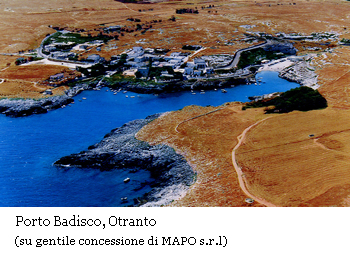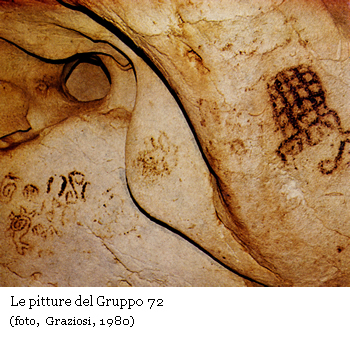 Italiano -
Italiano -  English
English In wall paintings carried out in the underground temple, Deer Cave painters have made their visions eternal that are impossible to explain. Both creatures, seemingly human beings and shapes, seemingly geometric break out from the wall, due to an art surge absolutely unexpected and original, changing and growing beyond recognition. The paint used is brown-black guano, bat fossil dung, which has flattened the colour iridescence in the darkness. Painters were obsessed by that substance and by its power still unknown to everyone. They can only be imagined during their mysterious artistic session, inspired and shrouded in the overwhelming darkness of Mother Earth. Painters could see myths, spirits and abstract shapes- that will be called phosphenes in this book, materializing under their eyes while the earth lavished its special fertilizer. Phosphenes were real beings from a parallel universe and never the fruit of neurological process. Religion was steeped in Myth, psychedelic phenomena and a magic deer to follow into another world populated by phosphenes.
In wall paintings carried out in the underground temple, Deer Cave painters have made their visions eternal that are impossible to explain. Both creatures, seemingly human beings and shapes, seemingly geometric break out from the wall, due to an art surge absolutely unexpected and original, changing and growing beyond recognition. The paint used is brown-black guano, bat fossil dung, which has flattened the colour iridescence in the darkness. Painters were obsessed by that substance and by its power still unknown to everyone. They can only be imagined during their mysterious artistic session, inspired and shrouded in the overwhelming darkness of Mother Earth. Painters could see myths, spirits and abstract shapes- that will be called phosphenes in this book, materializing under their eyes while the earth lavished its special fertilizer. Phosphenes were real beings from a parallel universe and never the fruit of neurological process. Religion was steeped in Myth, psychedelic phenomena and a magic deer to follow into another world populated by phosphenes.
 Phosphenes are traceable in the decorative repertoire of many prehistoric civilizations and not only in the Apulian cave. They can be found in The Pileta Cave dating back to the last Palaeolithic in Spain and in the fanciful decorations from Daunia, in Italy in the Iron Age. At this stage a question arises: what and how many abstractions might have the same etiology? Clearly, the phenomenon still needs to be set. In this connection, The Deer Cave provides decisive clues about a revision of a part of prehistoric art from the perspective of a psychedelic interpretation.
Phosphenes are traceable in the decorative repertoire of many prehistoric civilizations and not only in the Apulian cave. They can be found in The Pileta Cave dating back to the last Palaeolithic in Spain and in the fanciful decorations from Daunia, in Italy in the Iron Age. At this stage a question arises: what and how many abstractions might have the same etiology? Clearly, the phenomenon still needs to be set. In this connection, The Deer Cave provides decisive clues about a revision of a part of prehistoric art from the perspective of a psychedelic interpretation.
Nowadays, archaeological scholarship in this direction is proceeding particularly in America, Africa, Australia where the practice of altered states of consciousness or drug-taking as adjuvants, has been pervading art and crafts of local aboriginal culture since prehistory. Conversely, research of this kind is late in progressing in Europe. Though in the seventies pioneering articles had already appeared by authors such as Wellman who wrote about the phosphenes from Chumasch for Valcanonica BCSP (Bollettino Camuno di Studi Preistorici); Bednarik who talked about entoptic art both for the palaeolithic digital signs and for the Aboriginal Australian art; Samorini who identified a metaphorical graphics caused by drugs in the rock art of the palaeolithic Sahara. Moreover, Lewis-Williams’studies are worth remembering as he dealt as well as Dowson, with the Breton megalithism, with the shamanic art by the San from South Africa whereas, together with Clottes he investigated the French Cantabric caves as ideal places to go into a trance and have visions. Despite all these intuitions the Deer Cave art has never been related to the psychedely. Paolo Graziosi, the only scholar who analysed the cave for a long time, talked about images of emblematic abstract origin (our phosphogenes) using unwillingly a nomenclature similar to Max Knoll’s phosphenic one, but never going beyond a structural analysis. The idea suggests that Porto Badisco paintings still appear a real puzzle forty years after their discovery as Graziosi’s book is the only work centering around the topic, before this one.[...]
